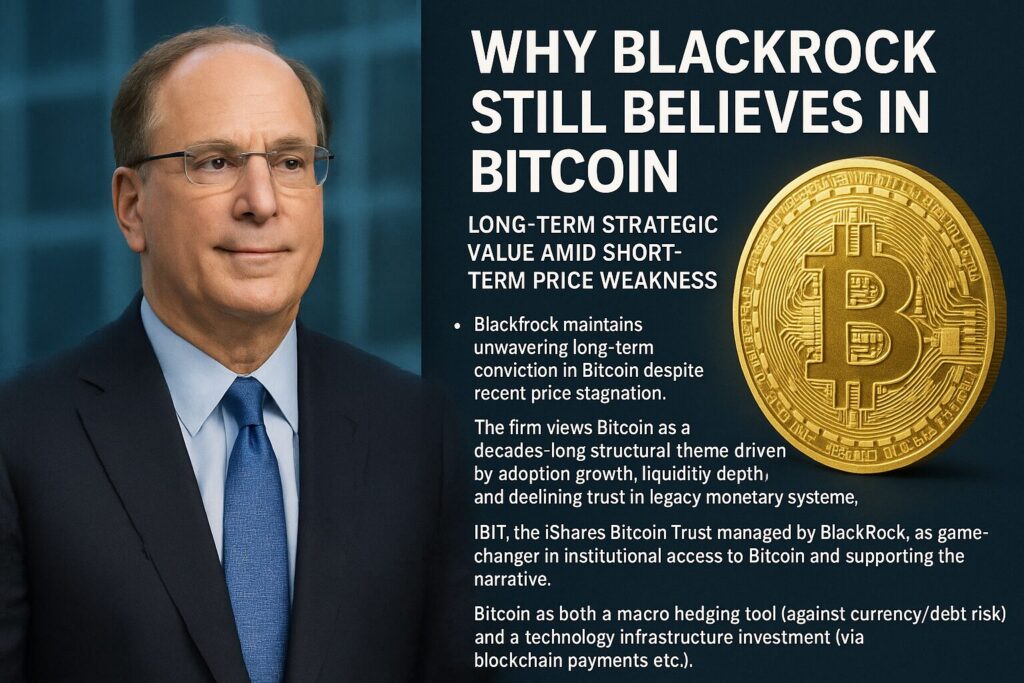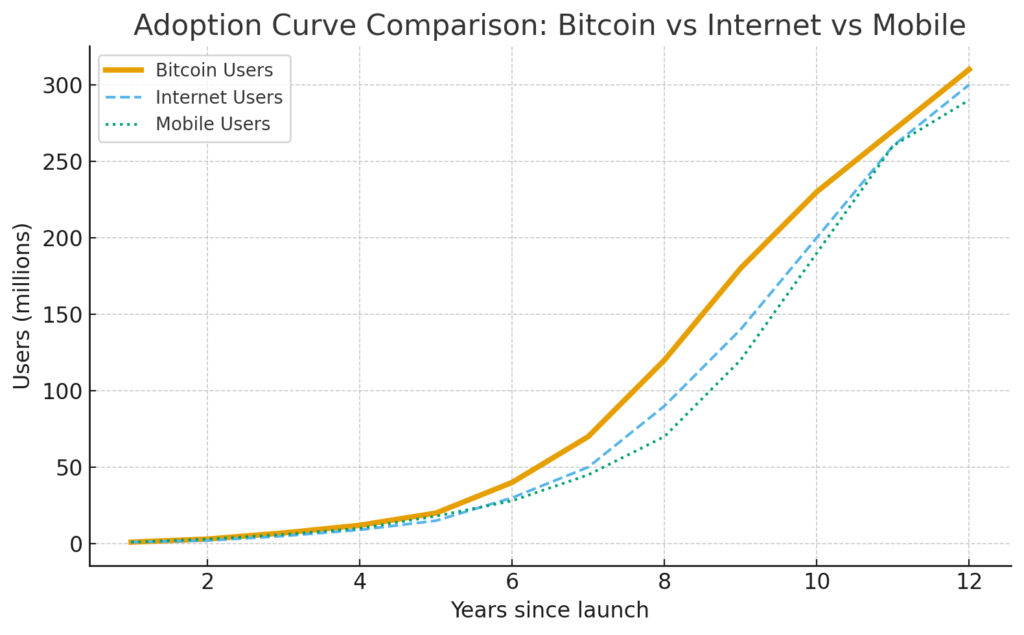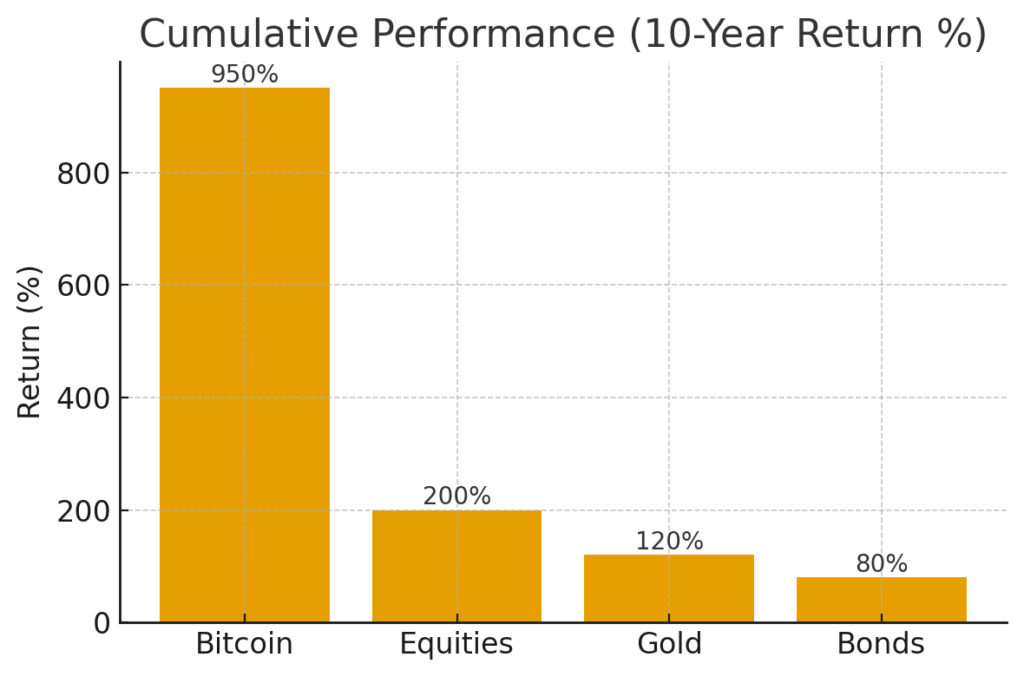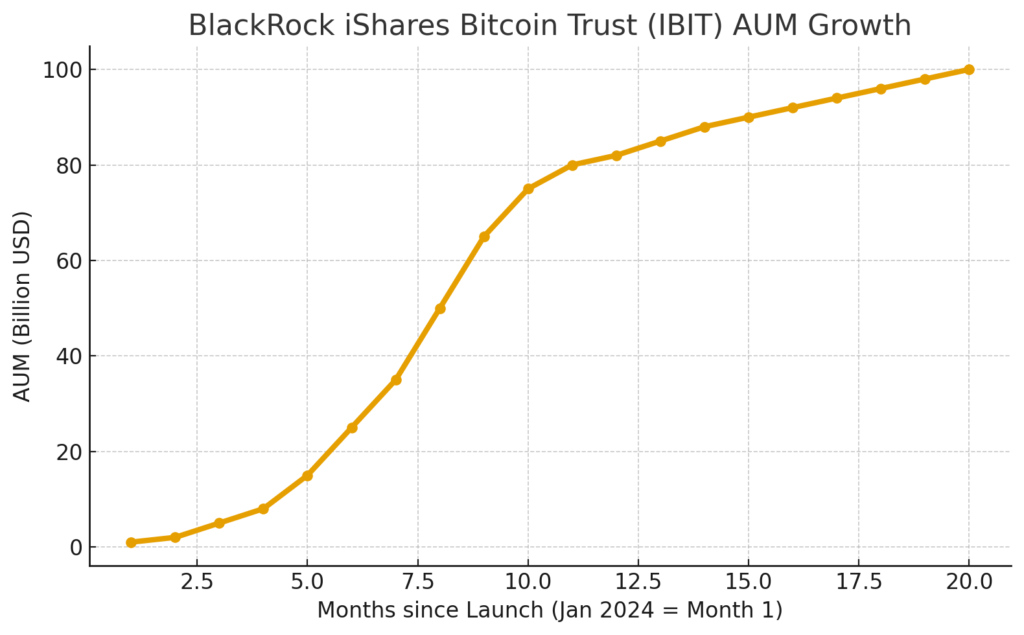
Main Points :
- BlackRock maintains unwavering long-term conviction in Bitcoin despite recent price stagnation.
- The firm views Bitcoin as a decades-long structural theme driven by adoption growth, liquidity depth, and declining trust in legacy monetary systems.
- IBIT, the iShares Bitcoin Trust managed by BlackRock, is highlighted as a game-changer in institutional access to Bitcoin and supporting the narrative.
- Bitcoin is framed by BlackRock as both a macro hedging tool (against currency/debt risk) and a technology infrastructure investment (via blockchain payments etc.).
- For crypto-asset investors scanning for new opportunities, BlackRock’s stance signals that Bitcoin remains a core “bridge asset” into broader blockchain and asset-tokenisation trends.
1. BlackRock’s Unshaken Conviction in Bitcoin

In a recent submission to the Securities and Exchange Commission (SEC), BlackRock reaffirmed that its long-term conviction in Bitcoin remains intact even as the asset’s price has been “lacklustre” in the short term.
They emphasise that short-term price movement is far less relevant for their investment horizon than structural factors: adoption curves, network growth, liquidity depth, and weakening confidence in traditional fiat currencies. For investors scanning for new crypto opportunities, this view suggests that the case for Bitcoin is increasingly about infrastructure and macro-themes, not merely price speculation.
BlackRock’s narrative is that Bitcoin has moved from being a niche “digital curiosity” to a recognised institutional asset. Their filing notes Bitcoin’s user-base — now estimated at over 300 million globally roughly 12 years after its launch — which they point out is a faster global adoption curve than early mobile phones or the initial internet.
That kind of adoption trajectory matters. For someone looking for practical blockchain use-cases, the implication is that Bitcoin is not just speculative but also foundational: as more users, institutions and applications anchor to the blockchain ecosystem, the demand dynamics deepen.
2. Bitcoin as a Structural Theme — Adoption, Liquidity, Fiat Weakness

2.1 Adoption and Network Growth
BlackRock emphasises that Bitcoin’s growth is structurally significant. They cite that user adoption surpassed ~300 million within about 12 years, a faster pace than major historic technologies.
From an investor’s viewpoint, this suggests the activity isn’t cyclical (just hype) but structural: the asset class is entering a phase of network maturity, which may reduce risk and increase institutional interest over time.
2.2 Liquidity Depth and Institutional Infrastructure
Another pillar in BlackRock’s thesis is the depth of liquidity and the transition of market infrastructure to layer institutional-friendly wrappers. For example, the iShares Bitcoin Trust (IBIT) provides a regulated vehicle for Bitcoin exposure without investors having to deal with direct crypto custody.
This matters because institutional investors — pensions, endowments, large asset managers — often cannot, or prefer not to, hold raw crypto. A product like IBIT lowers friction and risk. For someone building a non-custodial wallet or crypto service (like you are), the signal is clear: institutional wrappers and infrastructure layers are ascending — so building systems compatible with institutional use-cases and regulated interfaces may yield higher value.
2.3 Declining Trust in Fiat Systems & Macro Hedging Role
BlackRock frames Bitcoin as a “global alternative currency” of sorts. In an environment of rising government debt, inflationary risk, and waning trust in fiat systems, they argue Bitcoin is one of the rare decentralised, scarce assets that can benefit.
For the audience interested in “income opportunities and practical blockchain use”, this implies that Bitcoin is positioned not only for capital appreciation but also as part of asset-defence strategies (hedging macro risk). If you are looking at portfolios or building infrastructure around digital assets, this dual role (hedge + technology) shapes how you frame future services/products.
3. The Role of IBIT and Institutional Access

The iShares Bitcoin Trust (IBIT) is central to BlackRock’s strategy and broader adoption story. It was launched in January 2024 as a spot Bitcoin ETF (or trust), and it currently tracks the price of Bitcoin.
Key observations:
- IBIT offers investors exposure to Bitcoin via traditional brokerage accounts, bypassing direct self-custody.
- According to recent data, it is the fastest-growing ETF in history by assets under management, approaching or exceeding US$90-100 billion in AUM within ~20 months of launch.
- BlackRock’s infrastructure (custody via Coinbase Prime, regulatory wrapper, technology integration) lowers friction for large capital.
For investors scanning crypto opportunities: this structural shift is meaningful. While many may focus on new altcoins, the adoption of Bitcoin via institutional vehicles like IBIT signals that the “bridge asset” layer is now well established. If you build adjacent infrastructure (wallets, custody, tokenised assets), being compatible with this institutional layer matters—so consider how your wallet design (e.g., “dzilla Wallet”) supports institutional access, liquidity, compliance.
4. Implications for Crypto Investors & Practical Blockchain Use-Cases
4.1 For New Asset Discovery & Income Opportunities
BlackRock’s stance indicates that while Bitcoin’s short-term price may wobble, the structural case remains intact. For investors looking for new assets, this suggests two take-aways:
- Bitcoin may serve as a core foundation or “anchor” asset in a portfolio, around which higher-risk yield or growth strategies (altcoins, layer-2s, DeFi) can be layered.
- The institutional infrastructure ramp (ETFs, custody, regulated access) may spill over into adjacent tokens — meaning blockchain projects with institutional hooks (tokenised real-world assets, regulated stablecoins, high-liquidity layer-1s) may benefit from this momentum.
4.2 For Blockchain Infrastructure & Practical Use
From a practical blockchain implementation view, BlackRock’s thesis implies that we are moving beyond purely speculative uses of crypto into “financial infrastructure” mode. Two aspects stand out:
- Payments & settlement infrastructure: Bitcoin is increasingly viewed as part of global assets flows, reserve units, or settlement layers. If your project supports wallet features or swap flows (BTC↔ETH as you’re building), having BTC integration positions you in this macro-infrastructure wave.
- Tokenisation & institutional asset flows: With regulated vehicles like IBIT in place, the bridge between traditional finance (TradFi) and crypto is clearer. Wallets and services that are compliant, transparent, integrate with institutional rails (KYC/AML, custody, reporting) will be able to tap institutional asset flows.
4.3 Risk Considerations & Volatility
BlackRock does emphasise that Bitcoin remains volatile and subject to risks. Their own thematic outlook notes that Bitcoin’s fundamentals are distinct from equities or other risk-assets, but that short-term interest-rates, real yields, regulation still matter.
For your audience (new asset seekers, blockchain practitioners), this means: don’t ignore volatility; treat Bitcoin/infrastructure as long-term plays; and build products with risk-management, transparency, user education in mind.
5. Recent Trends Supporting the Thesis
Several recent data points reinforce BlackRock’s narrative:
- A single day (October 6 2025) saw U.S. spot Bitcoin ETFs record roughly US$1.19 billion in net inflows; of that, IBIT alone captured ~US$970 million (≈81 % of the total).
- IBIT is nearing the US$100 billion assets under management milestone less than two years after launch — placing it in the league of the largest ETFs ever.
- Institutional access infrastructure is clearly scaling: the liquidity and trading volumes data published by BlackRock show that post-January 11 2024 (IBIT’s commencement) 20-day average volumes across U.S. spot Bitcoin ETPs have reached material levels.
These data points illustrate that the structural adoption and institutional depth that BlackRock emphasised are manifesting in real flows and investor behaviour. For someone developing wallet infrastructure, these are signals: institutional flows may provide liquidity, but the user interface and on-chain/off-chain connectivity matter.
6. What Could This Mean for New Crypto Projects & Wallet Builders
Given the context above, here are practical take-aways for your project (the non-custodial “dzilla Wallet”) and for crypto investors scanning for the next move:
- Design for interoperability: With Bitcoin framed as the foundational asset and Ethereum (and other chains) as part of infrastructure, ensure your wallet supports seamless BTC↔ETH swaps, transparent UX, clear messaging about custody and regulation.
- Focus on institutional-ready features: Although your wallet may start retail-centric, consider features valued by institutions or large flows: compliance rails, auditability, liquidity partnerships, custodial overlays (for those parts that require non-custodial front-ends).
- Tokenised asset opportunities: If Bitcoin is accepted as a structural, long-duration asset, the “next frontier” will be blockchain-based real-world assets (RWA), tokenised securities, or regulated stablecoins. Projects that align with those narratives may attract institutional capital.
- Education and transparency: Because Bitcoin’s narrative is shifting from speculative to infrastructure/hedge, your wallet UX and communication should emphasise “why we hold BTC – for what purpose” rather than only “hope for price gain”. This strengthens user trust.
- Altcoin spill-over benefit: While Bitcoin remains the anchor, infrastructure momentum (ETFs, regulated access) may spill over to other tokens with institutional narratives (e.g., layer-1s, tokenised finance). So scanning for those could yield next-wave opportunities.
7. Conclusion
In summary, BlackRock’s recent filing and commentary reinforce that Bitcoin is not just in a speculative cycle but part of a broader structural transition — one that involves adoption, liquidity infrastructure, institutional access, and macro-currency hedging. For crypto investors and builders alike, this signals that while short-term price action may remain volatile, the longer-term strategic value is strengthening.
For your audience — those seeking new crypto assets, revenue opportunities, and practical blockchain use-cases — the implications are clear:
- View Bitcoin as more than just an asset to trade; consider it foundational infrastructure.
- Use it as an anchor while exploring higher-growth adjacent assets.
- Build wallet and tokenisation technologies that align with institutional rails and regulated access.
- Capitalise on the momentum of adoption and infrastructure rather than only hype.
Ultimately, BlackRock’s stance suggests that we are entering a phase where crypto infrastructure matures and bridges toward traditional finance. For those who position ahead — whether through wallet design, tokenised asset platforms, or compliant liquidity solutions — the opportunity may lie in being part of the “next wave”enabled by this Bitcoin-driven bridge.

